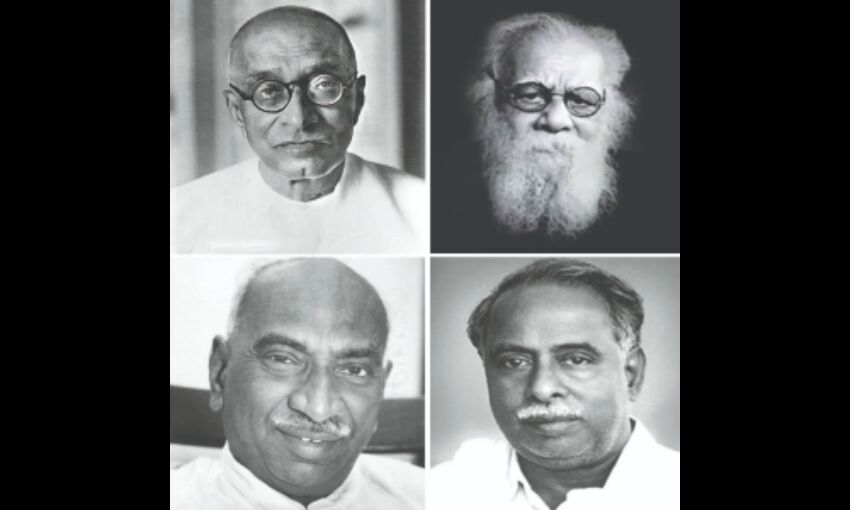From Madras to Tamil Nadu - II
Leadership decisions and changing circumstances eventually enabled the rise of Dravidian politics in Tamil Nadu

K Kamaraj remained the CM for three consecutive terms, winning the elections in 1957 and 1962. Had he remained at the helm in Tamil Nadu, the advent of Dravidian parties would have been considerably slower, or perhaps even abated. However, when as per the Kamaraj Plan, he resigned as the CM of Madras to take over as the Congress President, he became the king-maker to the country, but his successor M Bhaktavatsalam was no match to him. Unlike Kamaraj, his connection with the grassroots was limited, and being a Brahman was a political liability in the 'Periyar politics' of those times. The vacuum left in Tamil politics by Kamaraj was filled by none other than C Annadurai, who had been championing him in Dravidian, and then the Tamil cause.
It must be mentioned here that the move for a Dakshin Pradesh, or Dravidistan, including all the four southern states as well as Pondicherry lost ground with the acceptance of the SRC recommendations with respect to Kerala, Mysore (Kannada speaking) Madras (Tamil speaking) and Andhra as the Telugu speaking unilingual provinces. Although Annadurai was very vocal about a separate identity for the Tamils, the India-China war in 1962 saw all political parties (with the exception of CPI) come together, and Anna was no exception. Prior to the India-China war, he had stated in the Rajya Sabha that Dravidians want the right of self-determination.
This led to the passage of the Sixteenth Constitutional Amendment, also called the Anti–secessionist amendment. The statement of objectives and reasons appended to the 16th CSTB read 'the committee on national integration and regionalism appointed by the NIC recommended that Article 19 of the Constitution be so amended that adequate powers became available for the preservation and maintenance of the integrity, and sovereignty of the Union.' It also recommended that every candidate for the membership of the state legislature or the Union Parliament must pledge himself to uphold the Constitution and to preserve the integrity and sovereignty of the Union and that the forms of oath in the Third Schedule should be suitably amended. Incidentally, the Committee was headed by CP Ramaswami Aiyar, who as the Dewan of Travancore had moved heaven and earth for the continuance of British rule, and had also goaded the Chamber of Princes to declare their independence. A month before the Committee was set up, Annadurai in his very first speech to the Parliament on May 1, 1962, demanded the 'separation of Dravida Nad'. He had been elected to the RS by the legislators owing allegiance to DMK which had emerged as the principal opposition party in the State.
Soon after the Sixteenth Amendment came into effect, the DMK gave up its demand for an independent Dravida Nadu, despite being the only party to have opposed the Amendment in the Parliament. Anna was not only shrewd and tactical; he was the master of the metaphor. Thus, he described himself as 'a Hindu sans the sacred ash, a Christian minus the Holy Cross, and a Muslim without the prayer cap. On January 26, 1965, when the fifteen-year period for retaining English came to a close, he coined the slogan 'Down with Hindi, Long Live the Republic'. He was thus addressing an audience in his state, as well as the larger polity of India where he sought to make a clear distinction between love of Hindi and love of the country, and the trope which held that both had to go together. In a rhetorical statement, he said 'It is claimed that Hindi should be the common language because it is spoken by the majority. Why should we then claim the tiger as the national animal instead of the rat which is so much more numerous? Or the peacock as our national bird when the crow is ubiquitous.'
In this, he received support from several other non-Hindi speaking states. On the contrary, Bhaktavatsalam could not capture the public mood and rather than make a concession to the growing pro-Tamil sentiment, he attacked Anna's movement as blasphemous at a time when there were hardly any adherents for Hindi. In fact, his critique of Anna actually tilted the balance in favour of the Dravida party, and after 1967, the state has been ruled by one of the factions of the Dravida party.
Here again, it is important to note that DMK could emerge victorious only because of the vehement support of C Rajagopalachari, who had moved away from the Congress, established the Swatantra Party, and ensured that the anti-Congress vote is not divided.
Immediately on coming to power, Anna legalised self-respect marriages for the first time: these did not mandate the requirement of a Brahmin priest to preside over the nuptials. He encouraged simple, inter-caste marriages. He was also the first to offer subsidised rice as an electoral promise and in many ways is the precursor to the National Food Security Act. Apart from organising two world conferences on Tamil, he issued an order removing images of gods and all other religious symbols from government offices. Even though his health had deteriorated on account of his tobacco chewing habit, he continued to address public meetings against medical advice and breathed his last on September 10, 1968, and the Guinness Book of Records acknowledged that this was, till then, the largest number of attendees for a funeral procession!
The writer is the Director of LBSNAA and Honorary Curator, Valley of Words: Literature and Arts Festival, Dehradun



